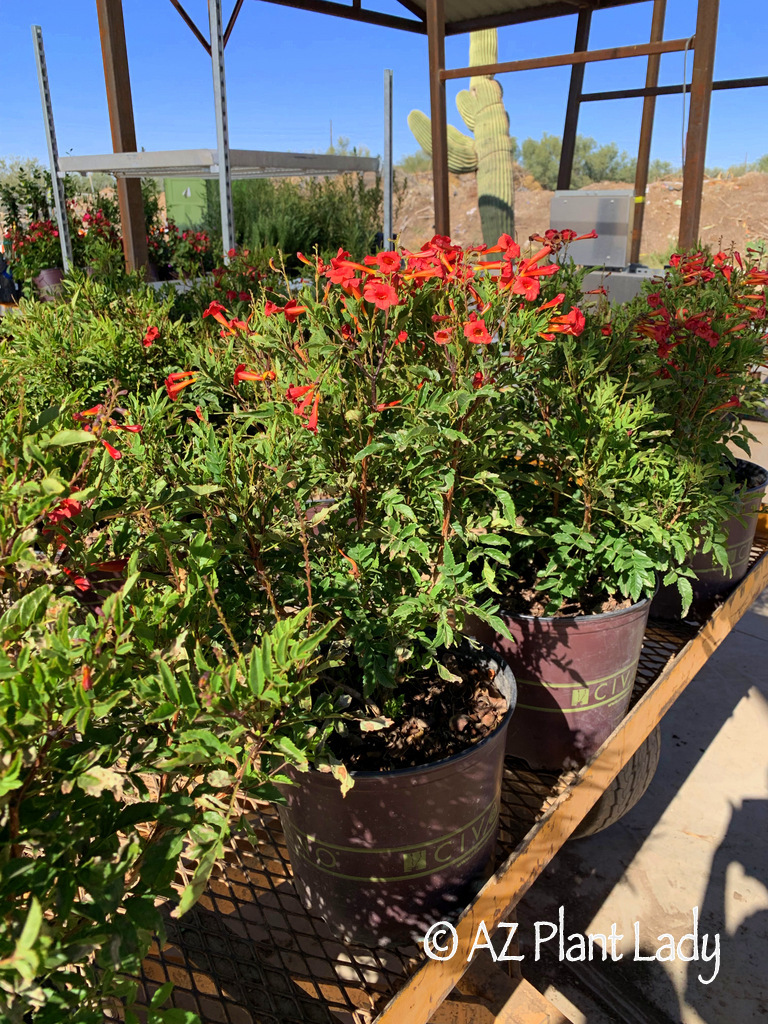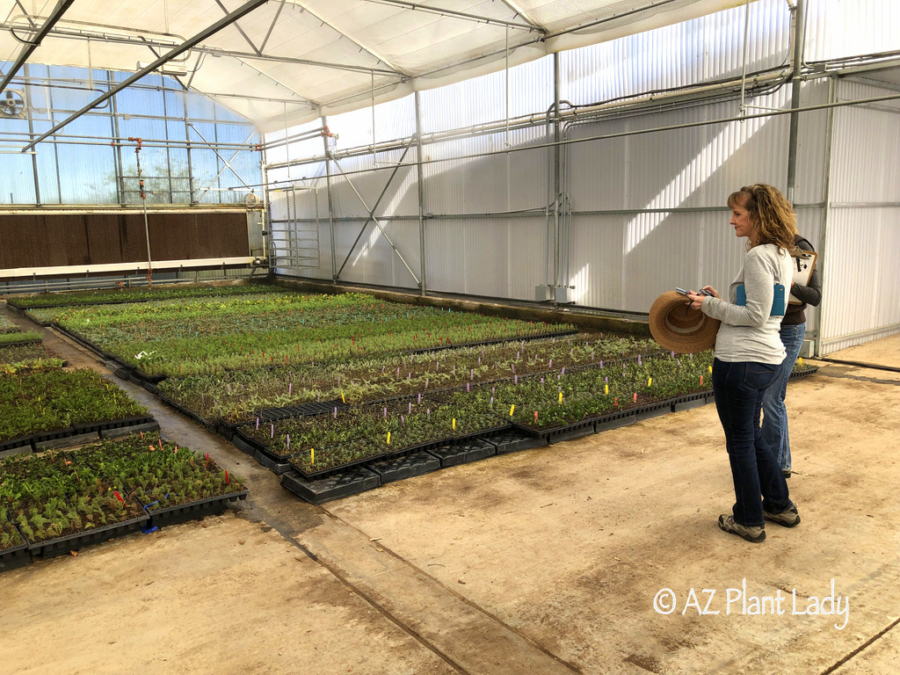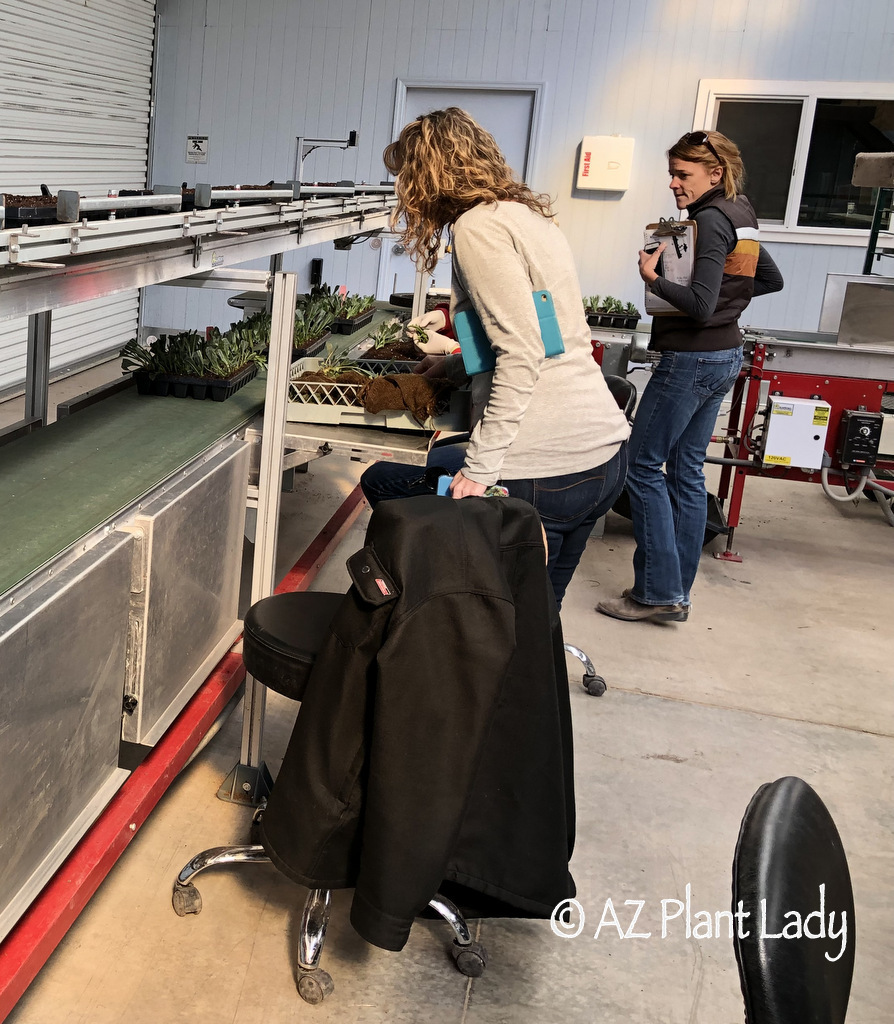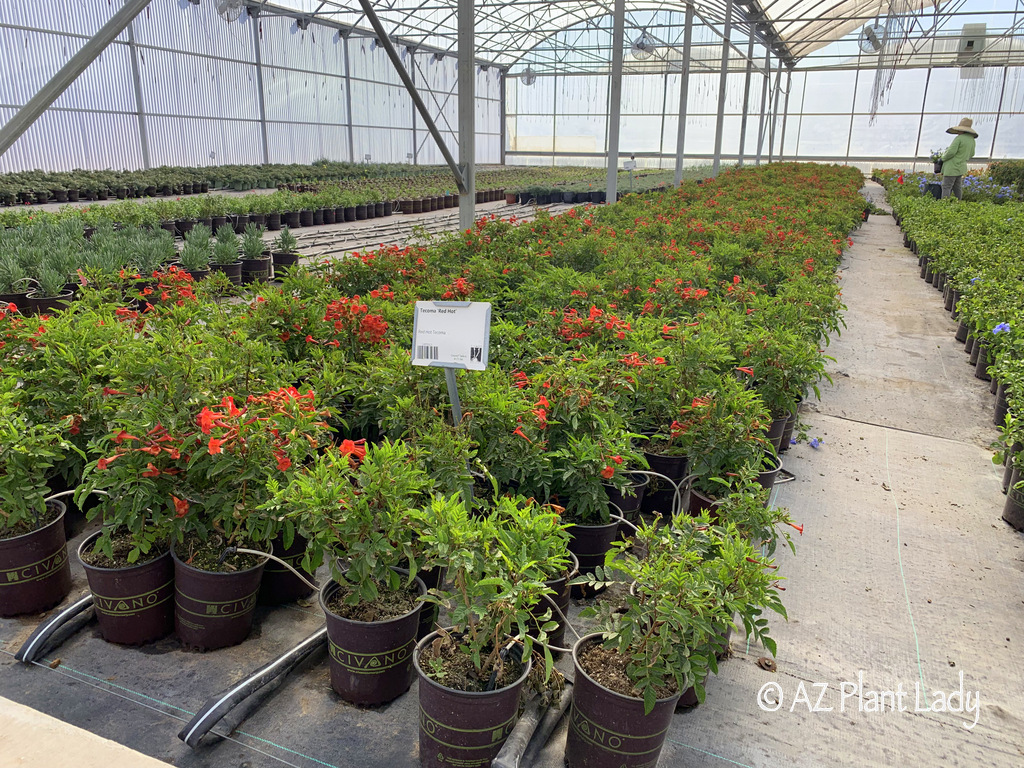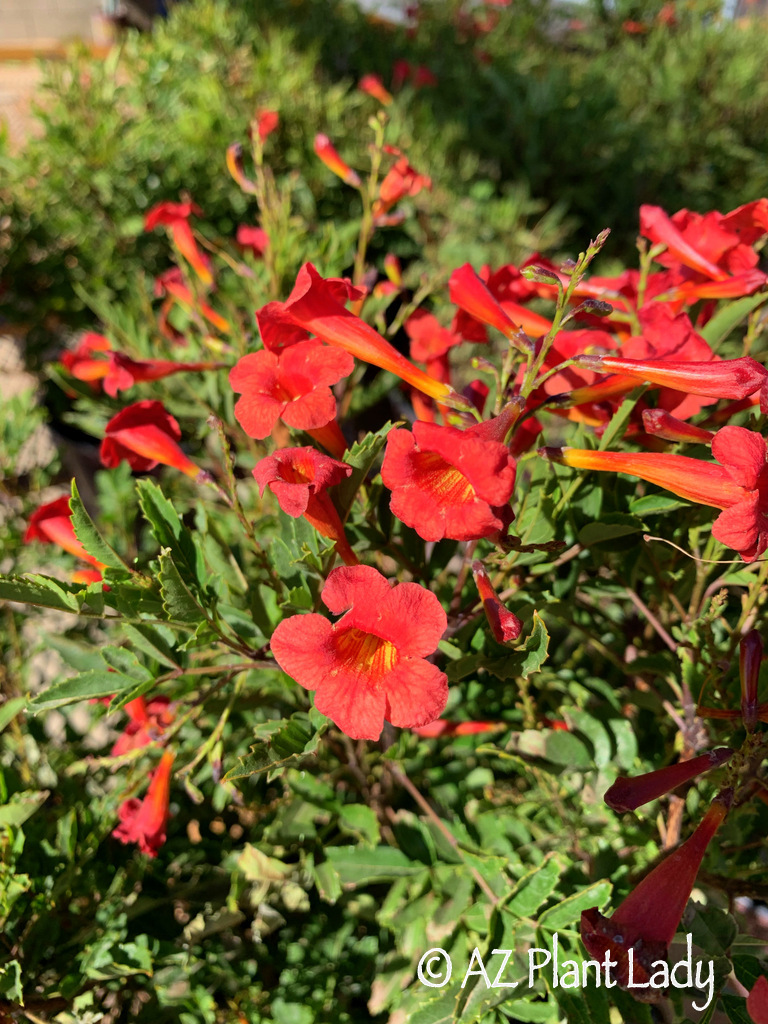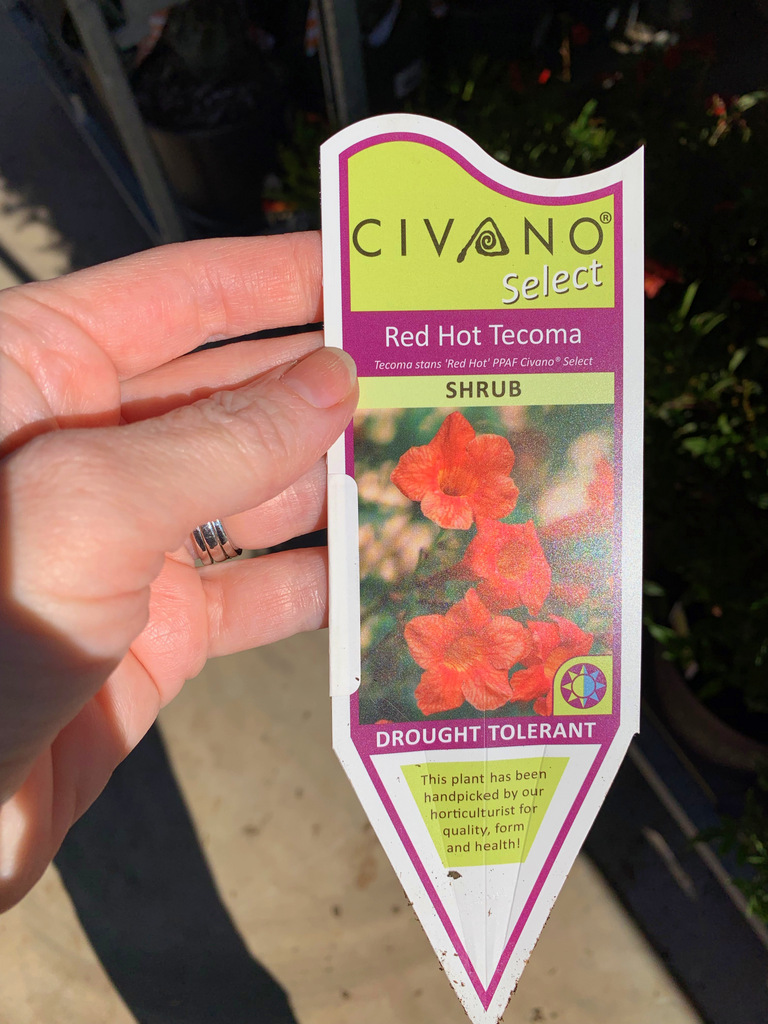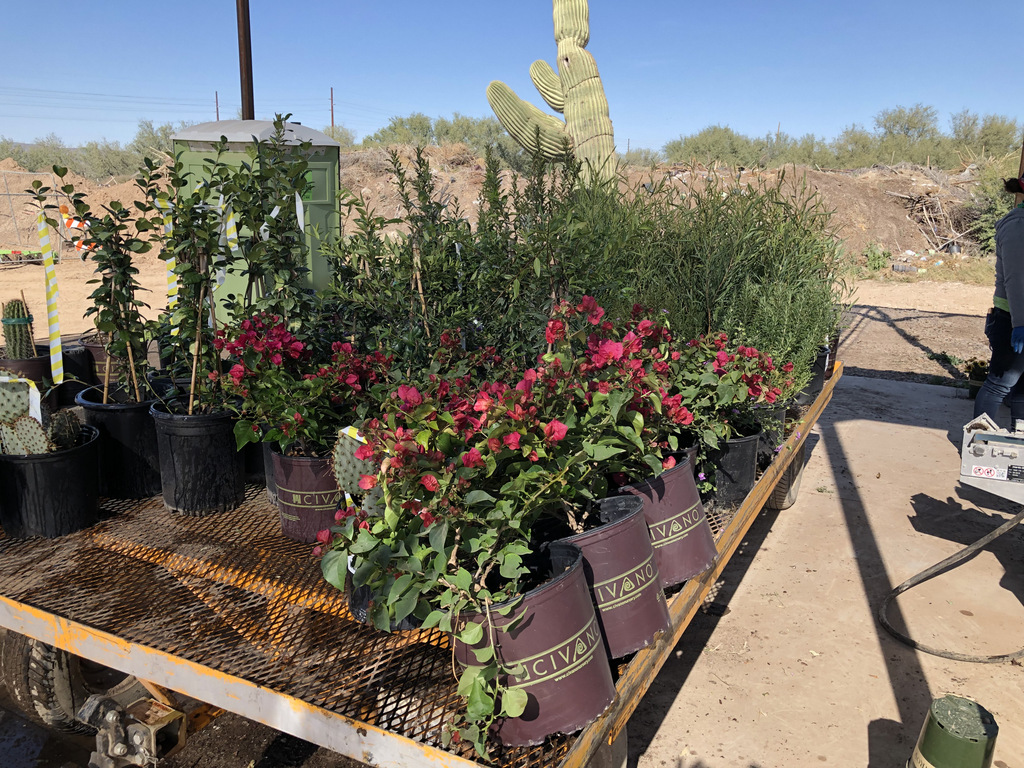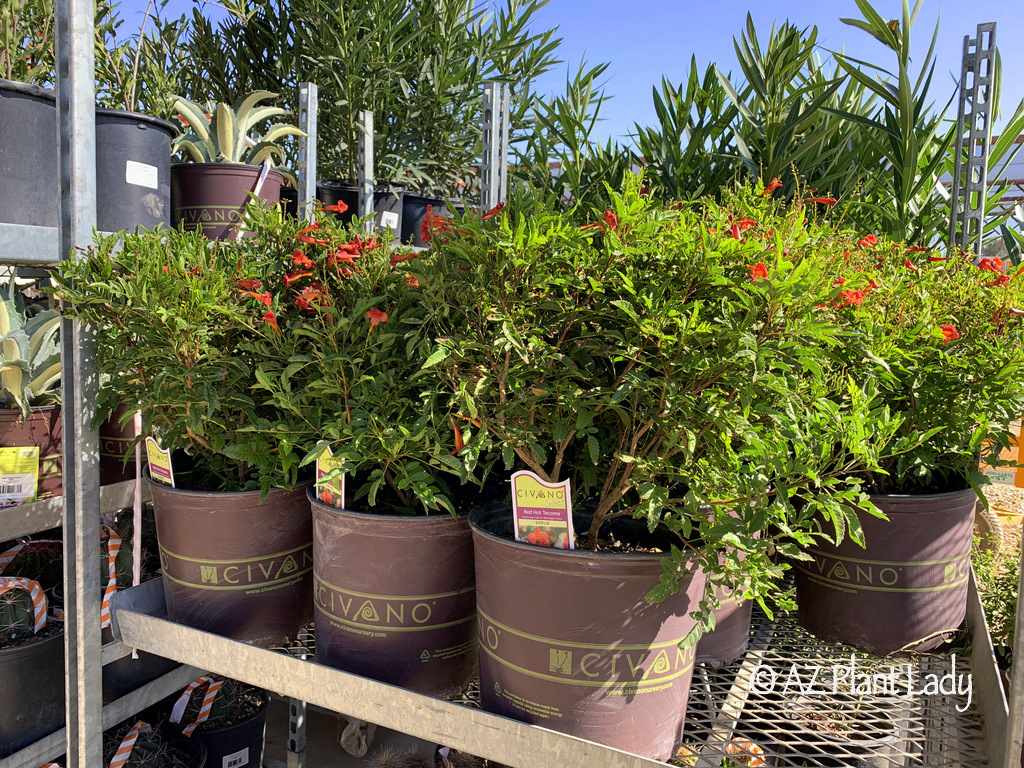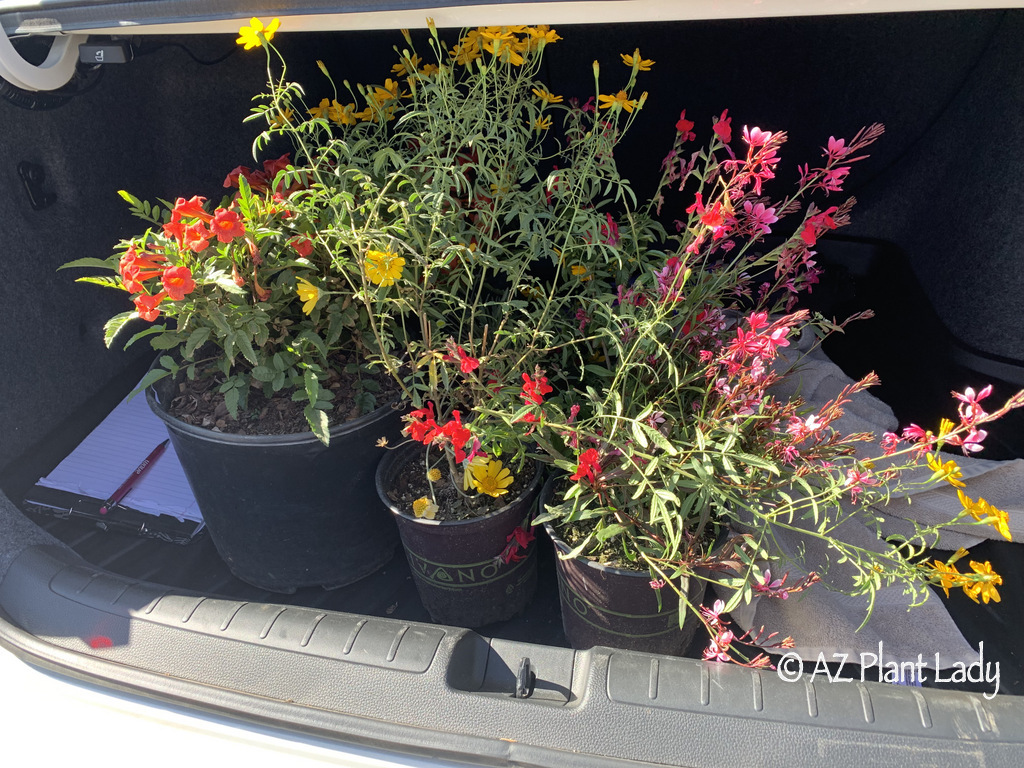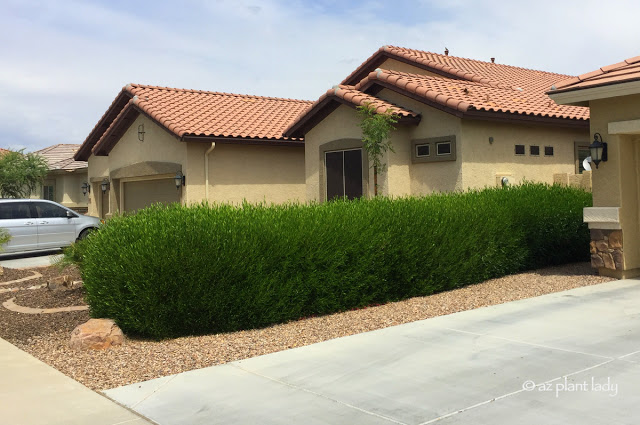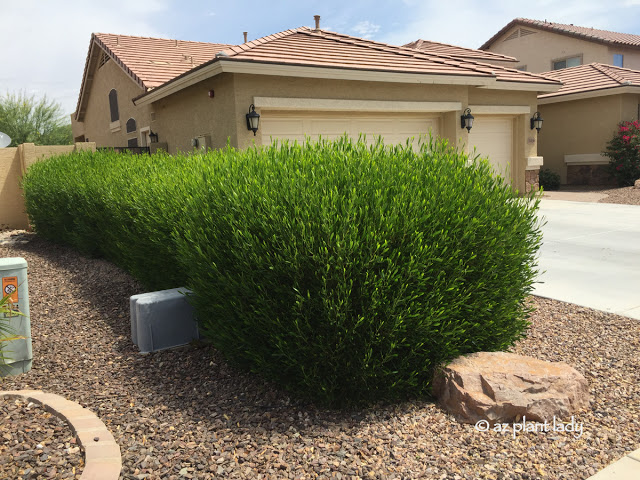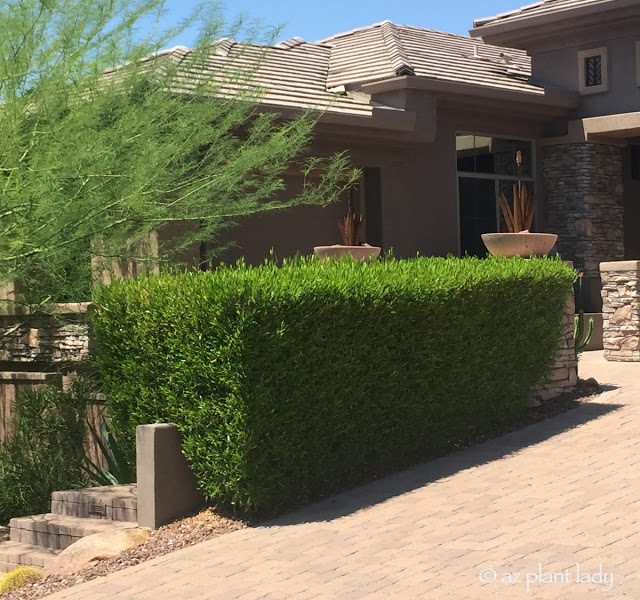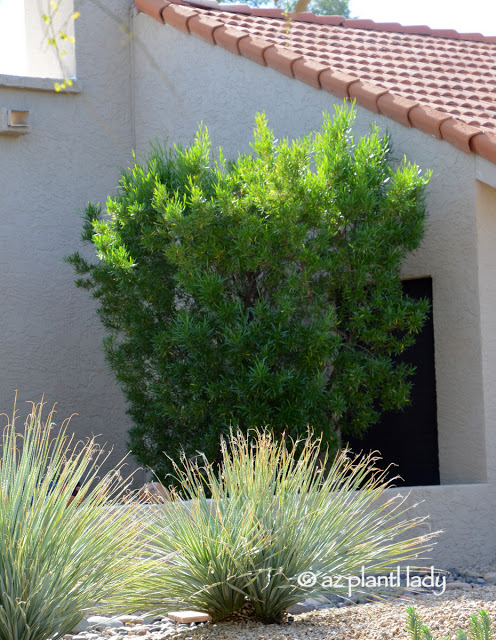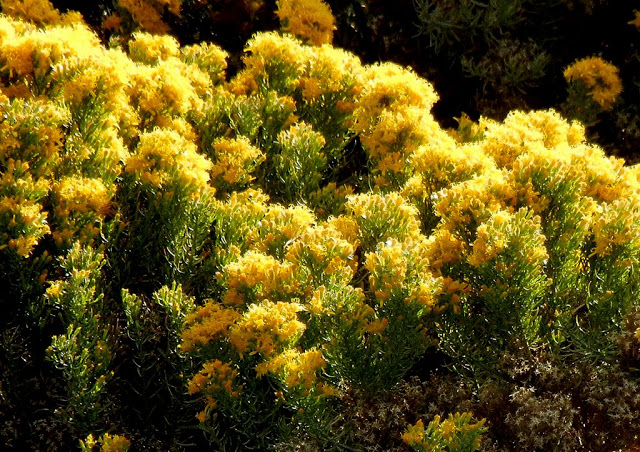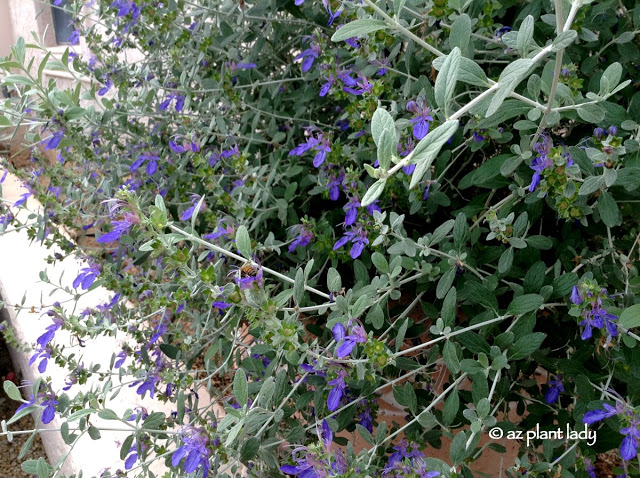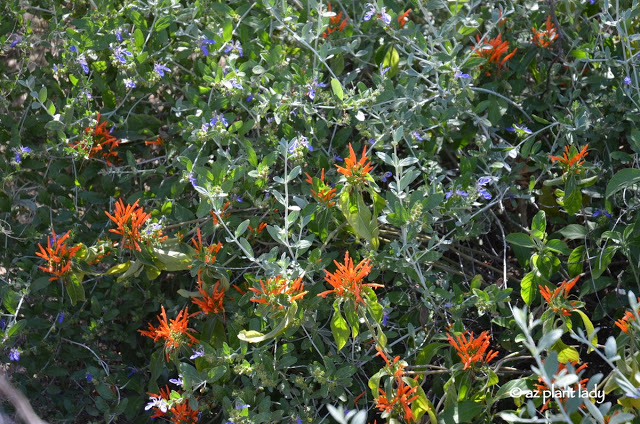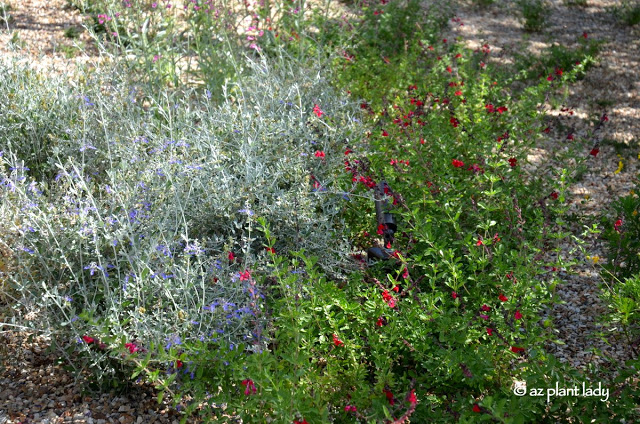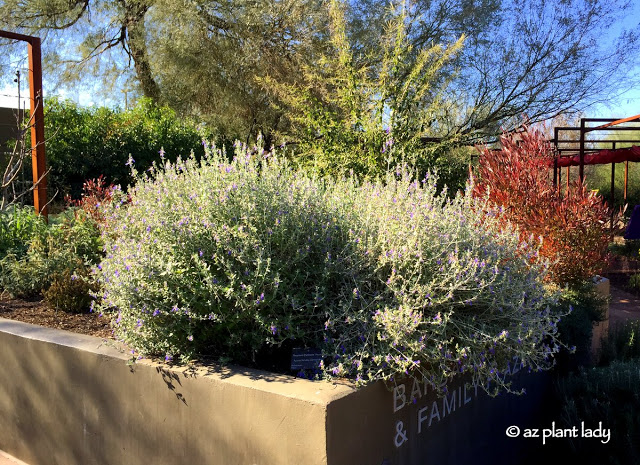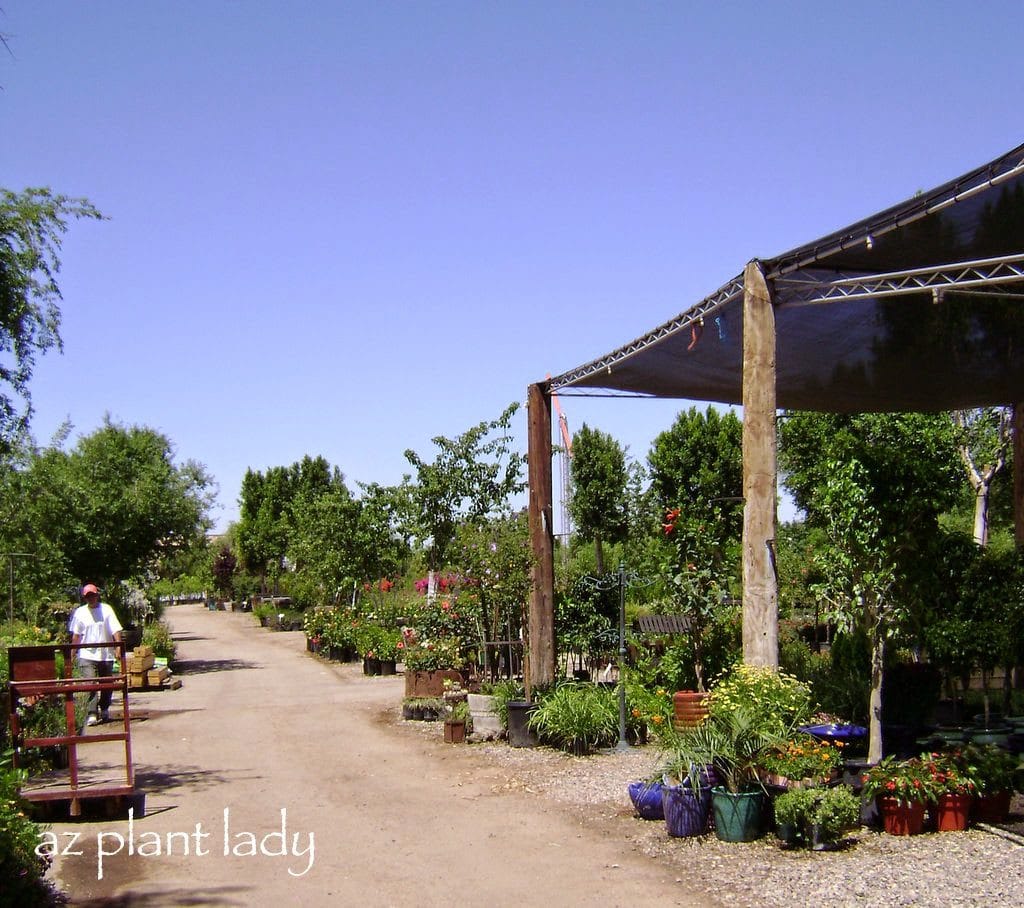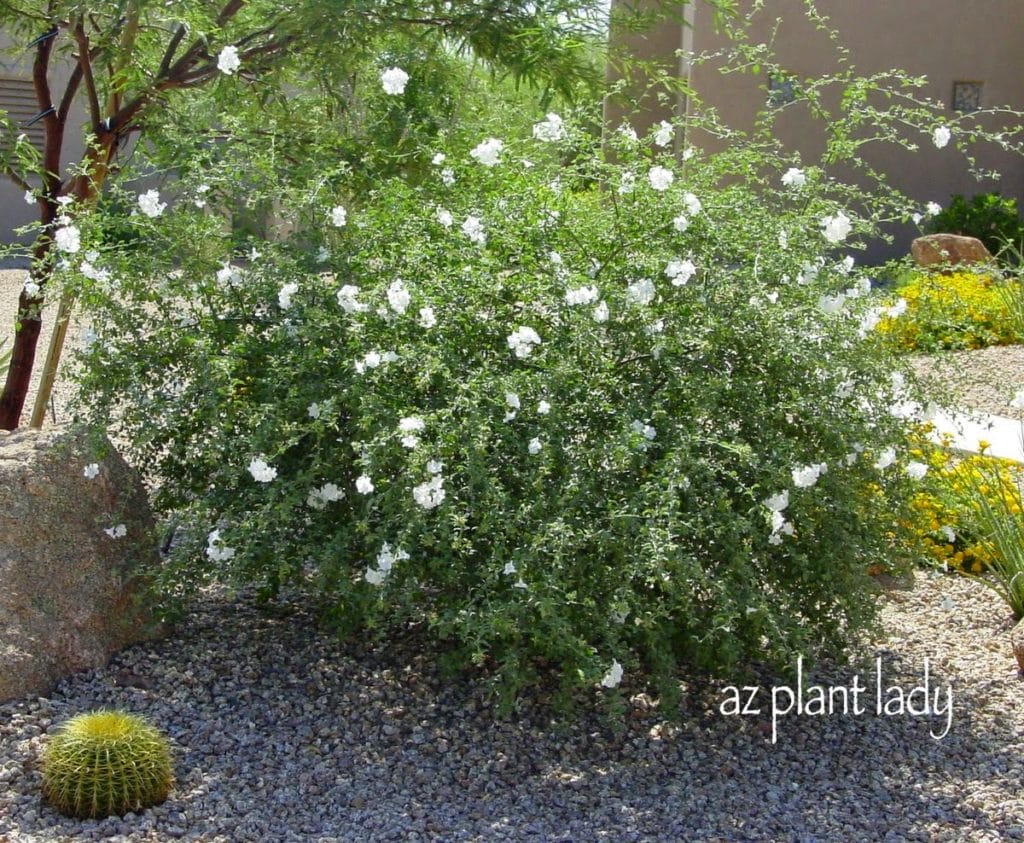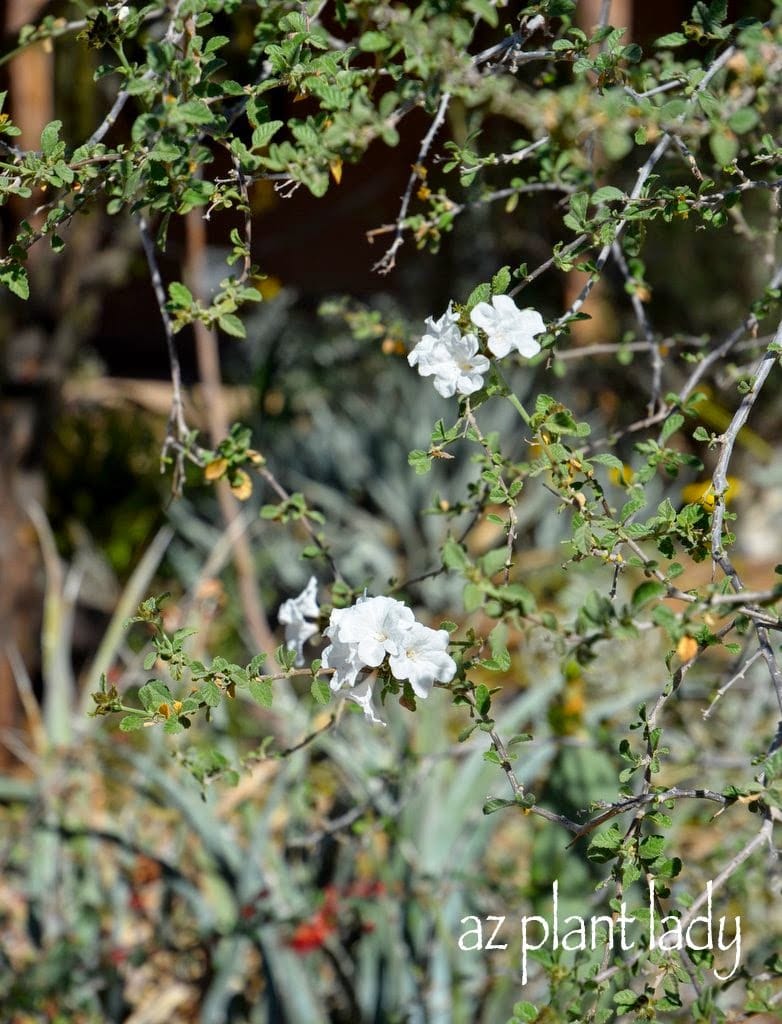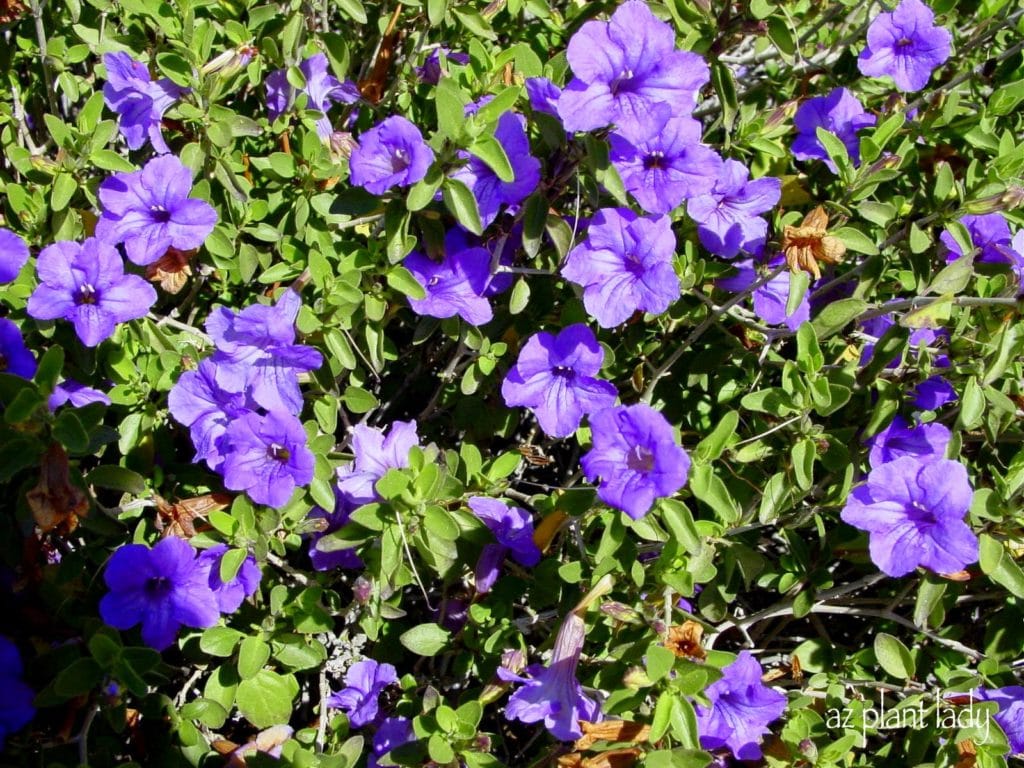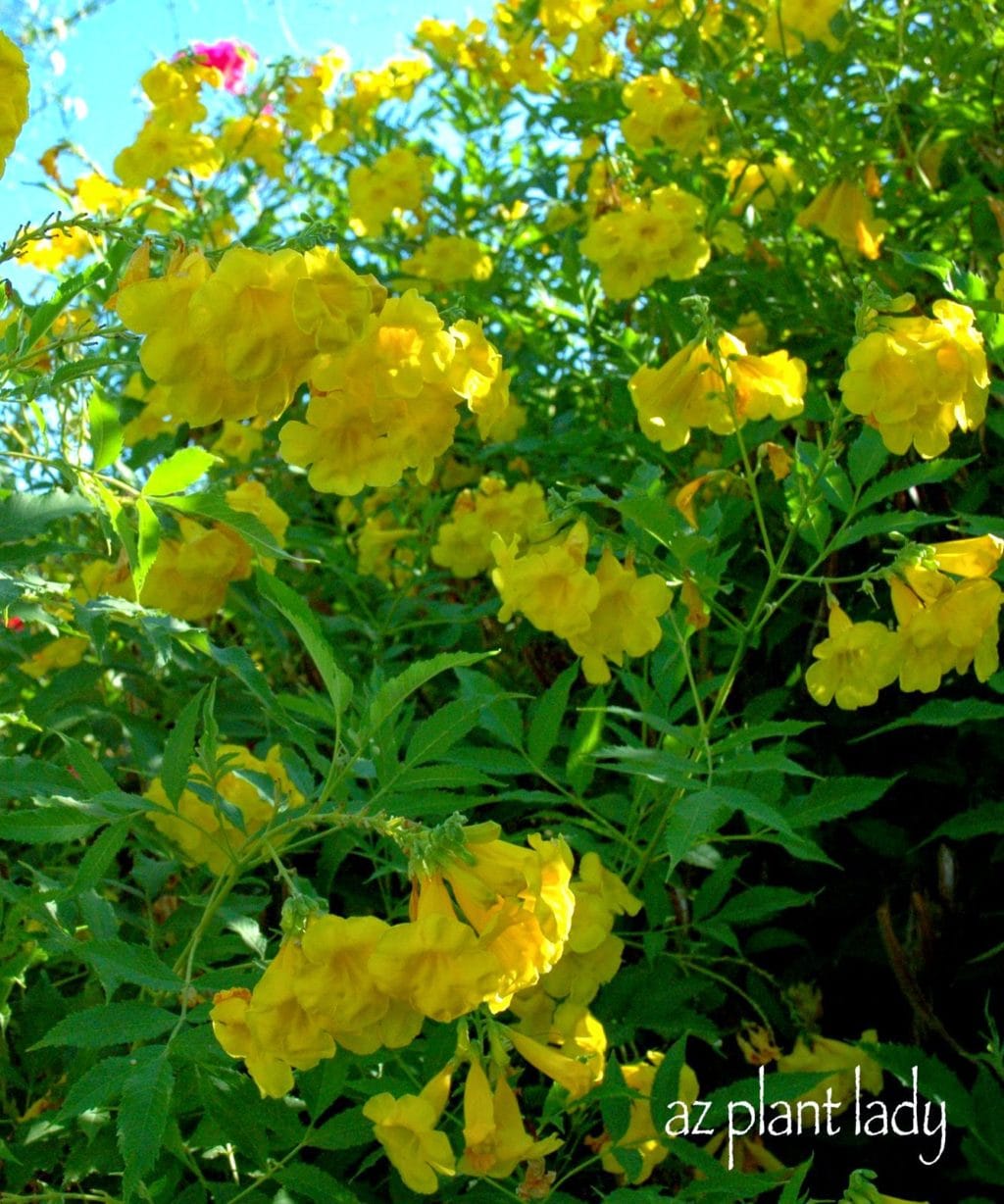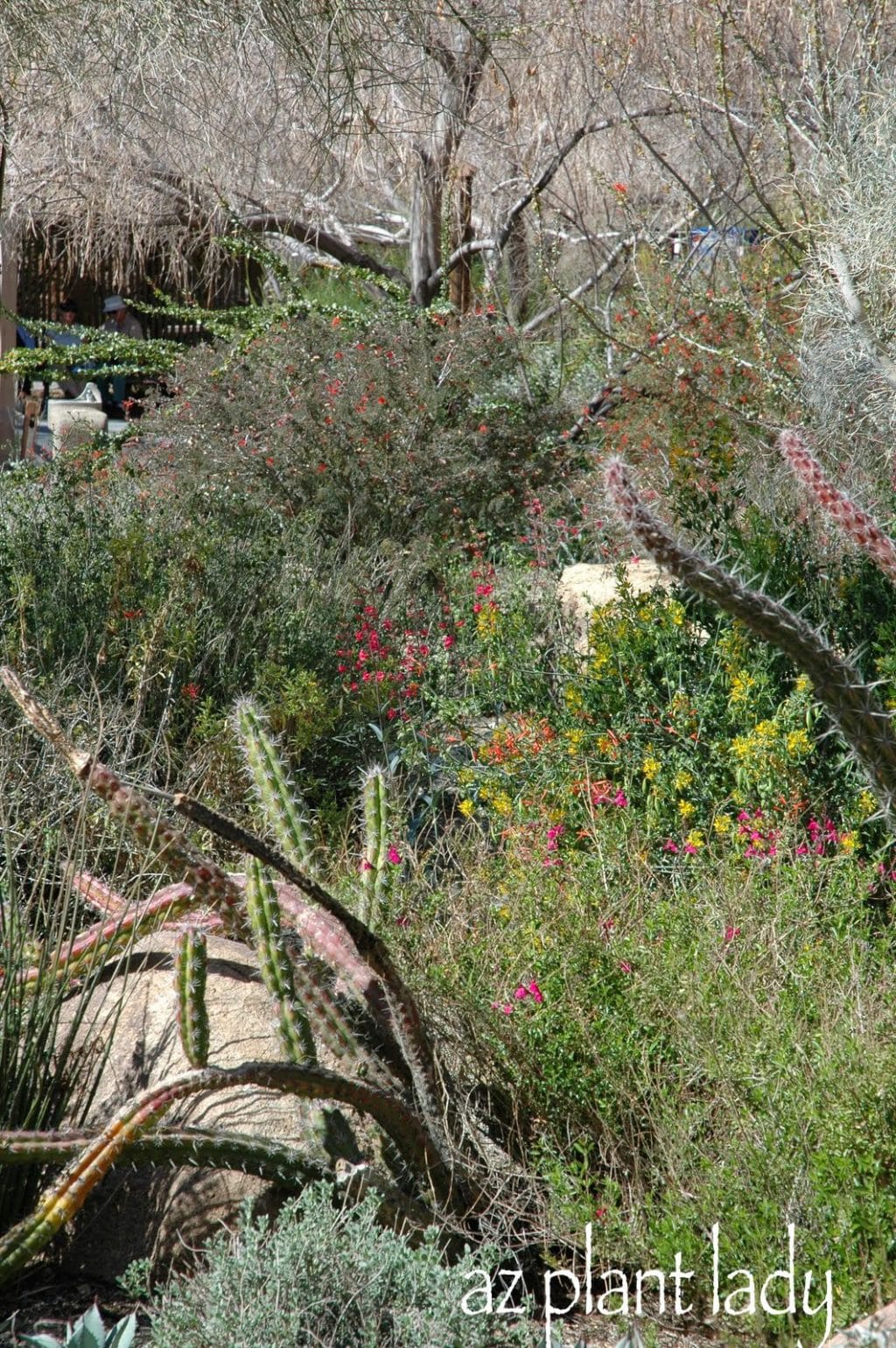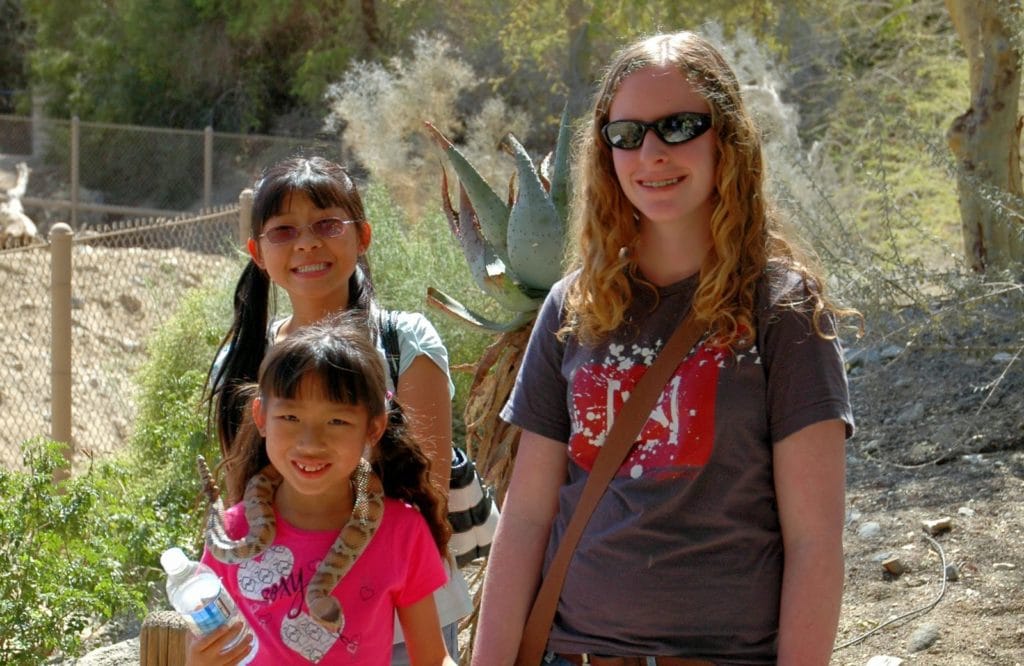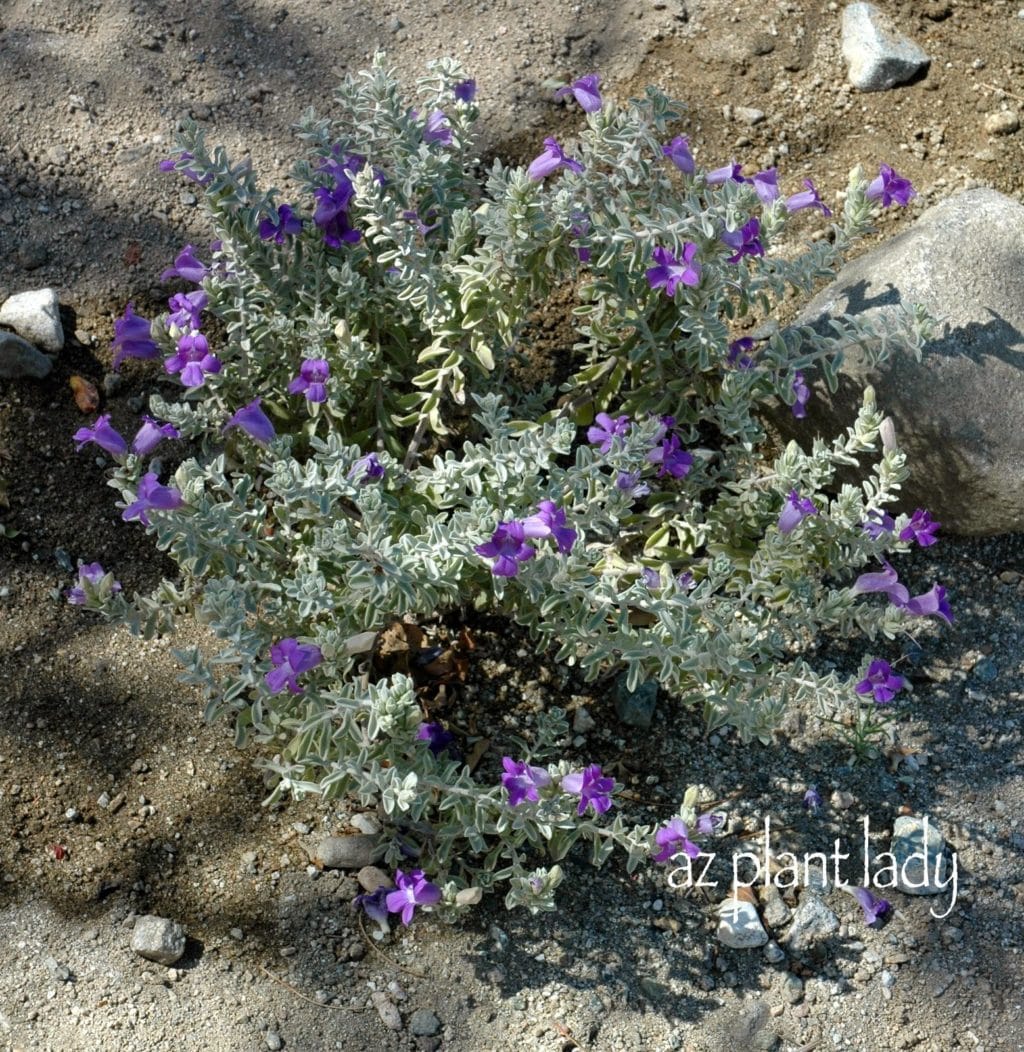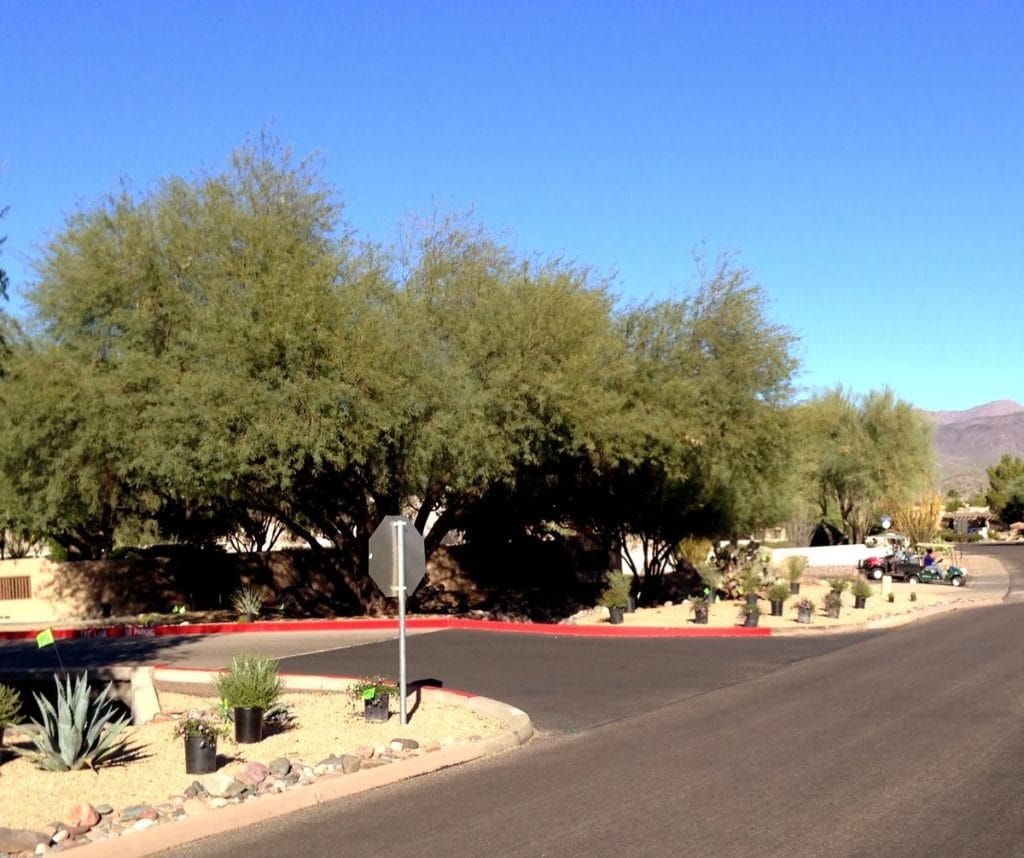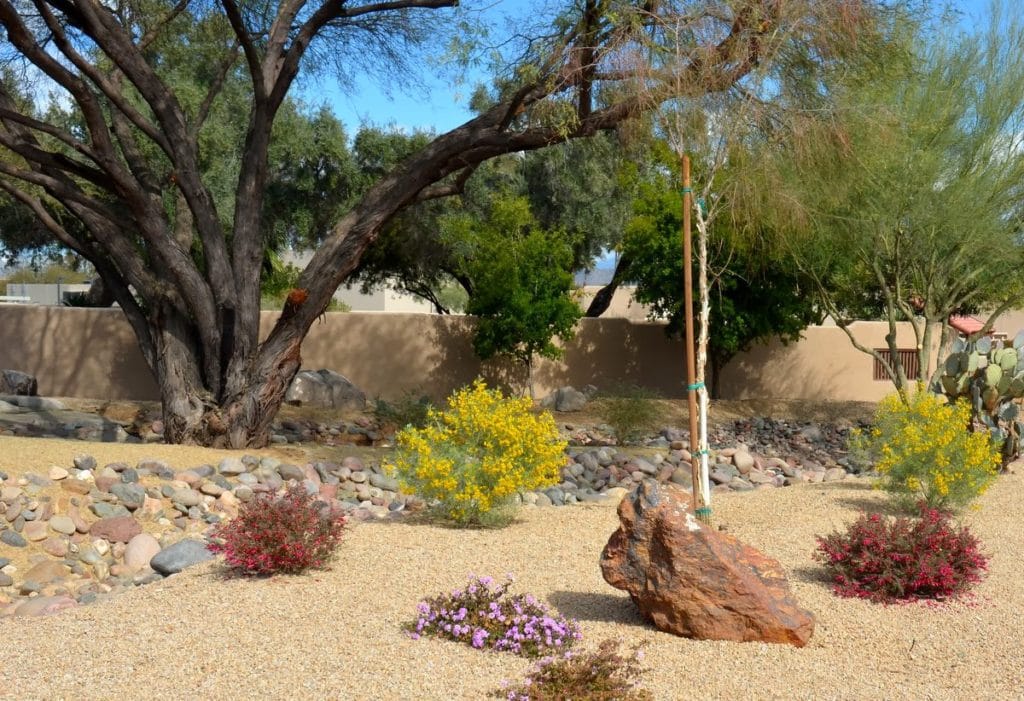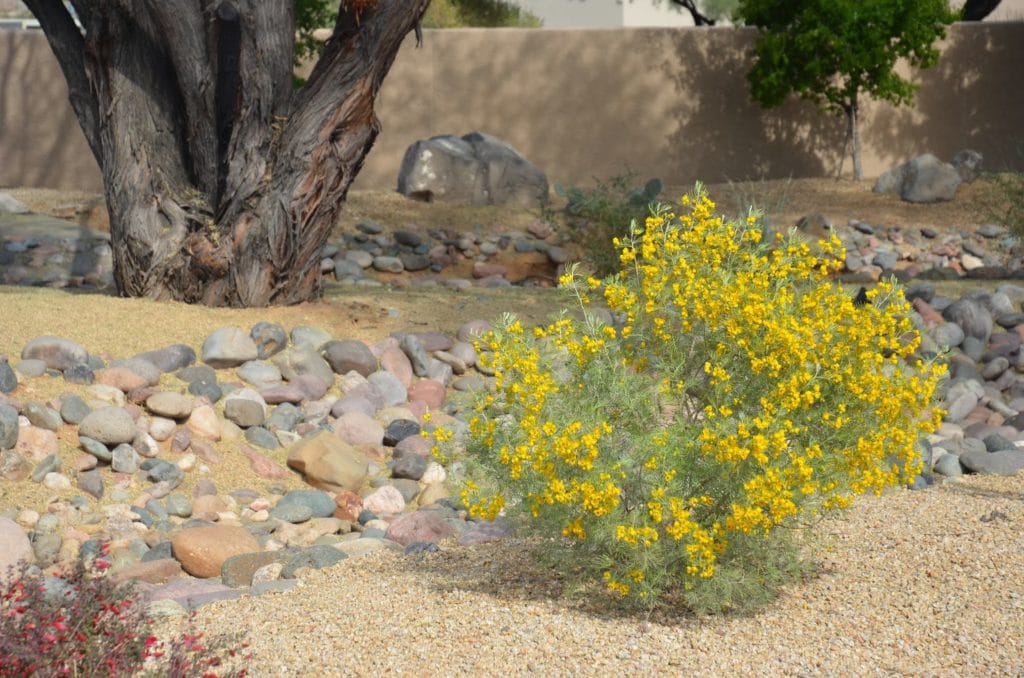Discovering the Beauty of ‘Orange Jubilee’ and ‘Sparky’ Tecoma Shrubs
One of my favorite things I do as a landscape consultant is to show my clients newer plant and shrub introductions on the market.
Imagine being the first person on your block with the latest plant that all your neighbors will want to add in their landscape.
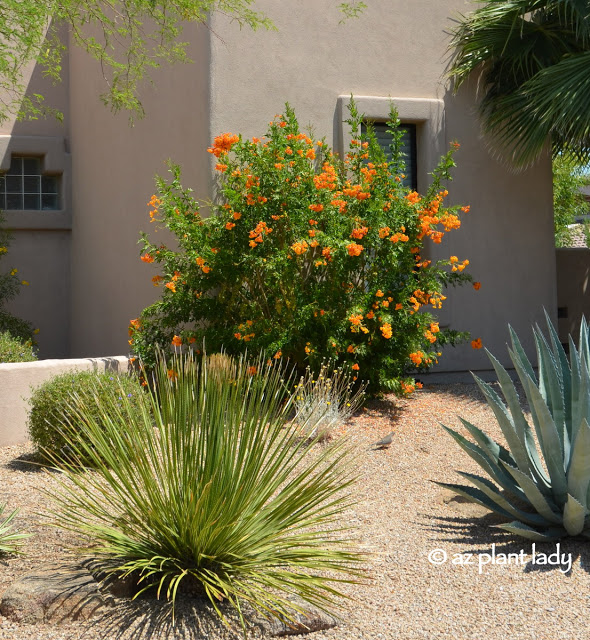
Tecoma x ‘Orange Jubilee’
The Allure of Tecoma x ‘Orange Jubilee’
Many of you may be familiar with the large, orange-flowering shrub Tecoma x ‘Orange Jubilee’. This popular shrub has clusters of trumpet-shaped flowers and a long bloom period. Its large size 8-12-foot height makes it a favorite for screening out a block wall or unfavorable view.
While the flowers and lush foliage are a plus, Orange Jubilee is too large for many smaller areas, which is why this newer shrub is one of my new favorites.
Introducing ‘Sparky’ Tecoma: A New Shrub Sensation
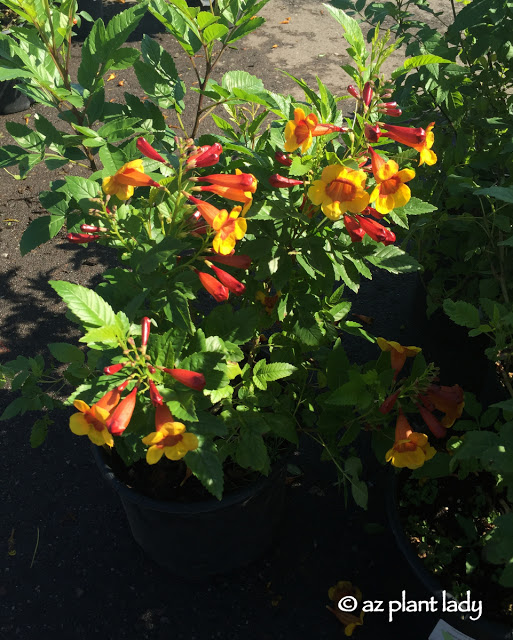
‘Sparky’ Tecoma is a hybrid that has bi-colored flowers and is named after Arizona State University’s popular mascot due to the coloring. It was created by a horticulturist and professor at ASU.
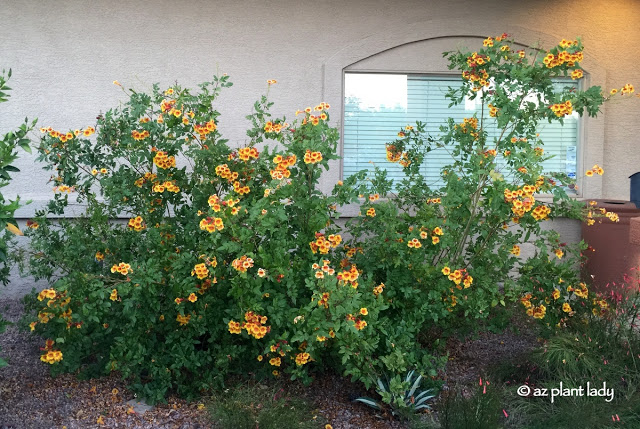
‘Sparky’ is about half the size of ‘Orange Jubilee,’ which makes it suitable for smaller spaces. It has smaller leaves and a slightly more compact growth habit, reaching 4-5 feet tall and wide.
Both types of Tecoma have the same requirements – plant in full sun and prune away frost-damaged growth in March. ‘Sparky’ is slightly more cold tender than ‘Orange Jubilee’.
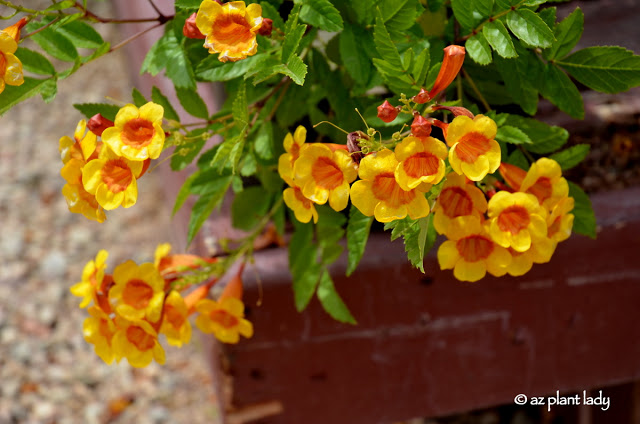
Personal Experience: Adding Tecoma Shrubs to My Garden
I have added three of these lovely shrubs in my front garden. One along my west-facing side wall, and two that flank either side of my large front window. They add beautiful color 9 months a year.
For those of you who are U of A alumni, you can plant one and call it something else. To date, there isn’t any word of a red, white and blue hybrid yet – but, I’ll be sure to let you know if they create one 😉


